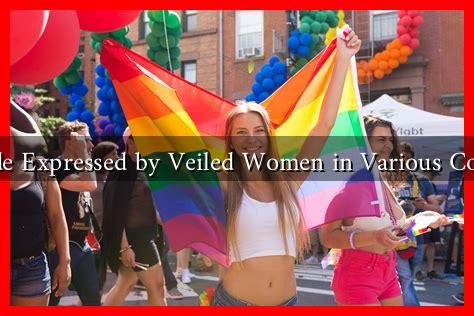-
Table of Contents
How Is Pride Expressed by Veiled Women in Various Communities?
The expression of pride among veiled women is a multifaceted phenomenon that transcends cultural, religious, and geographical boundaries. While the veil is often perceived through a lens of oppression, many women embrace it as a symbol of identity, empowerment, and resistance. This article explores how pride is expressed by veiled women in various communities, highlighting their diverse experiences and the significance of the veil in their lives.
The Veil as a Symbol of Identity
For many women, the veil is not merely a piece of clothing but a profound expression of their identity. It serves as a marker of cultural heritage and religious beliefs. In communities where the veil is a common practice, women often take pride in their ability to uphold traditions that have been passed down through generations.
- Religious Significance: In Islamic communities, the hijab is often seen as an act of obedience to God. Women who wear it may express pride in their faith and commitment to their spiritual values.
- Cultural Heritage: In regions like North Africa and the Middle East, traditional veils such as the chador or the abaya are integral to cultural identity. Women may feel a sense of pride in wearing these garments as a way to honor their ancestry.
Empowerment Through Choice
Contrary to the stereotype of the oppressed veiled woman, many women choose to wear the veil as an assertion of their autonomy. This choice can be a powerful statement of self-empowerment.
- Personal Agency: Women who choose to wear the veil often do so as a way to reclaim their bodies and assert control over how they present themselves to the world.
- Resistance to Stereotypes: By embracing the veil, women challenge societal norms and stereotypes that depict them as submissive. This act of defiance can foster a sense of pride and solidarity among veiled women.
Community and Solidarity
Pride among veiled women is often expressed through community engagement and solidarity. In many cultures, women who wear the veil form strong networks that provide support and encouragement.
- Support Networks: Organizations such as the Muslim Women’s Network UK provide platforms for veiled women to share their experiences and advocate for their rights.
- Collective Activism: Veiled women often participate in social and political movements, using their visibility to challenge discrimination and promote equality. For instance, during protests in France against the ban on the hijab, women took to the streets to assert their rights and express their pride in their identity.
Artistic Expression and Representation
Art and media play a significant role in how veiled women express their pride. Through various forms of artistic expression, they challenge stereotypes and celebrate their identities.
- Visual Arts: Artists like Shirin Neshat use photography and film to explore themes of femininity, identity, and the veil, providing a nuanced perspective on the experiences of veiled women.
- Literature and Poetry: Writers such as Leila Aboulela and Fatima Mernissi have penned works that reflect the complexities of being a veiled woman, offering insights into their lives and struggles.
Case Studies: Global Perspectives
Examining specific case studies can provide a deeper understanding of how pride is expressed by veiled women in different contexts.
- Turkey: In Turkey, the hijab has been a contentious issue, with women expressing pride in their choice to wear it despite political opposition. The rise of the AKP party has seen a resurgence of hijab-wearing women in public life, showcasing their empowerment.
- France: The ban on religious symbols in public schools has led to significant protests by veiled women, who assert their right to express their identity while pursuing education.
Conclusion
The expression of pride among veiled women is a rich and complex topic that encompasses identity, empowerment, community, and artistic expression. By understanding the diverse experiences of these women, we can challenge stereotypes and appreciate the multifaceted nature of their lives. The veil, far from being a symbol of oppression, can serve as a powerful emblem of pride, autonomy, and resistance in various communities around the world.
For further reading on the subject, you can explore resources such as Muslim Women’s Network UK and various academic studies that delve into the experiences of veiled women globally.

